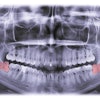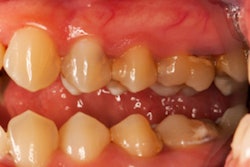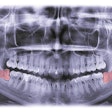
What are the effects of different dosages and duration of adjunctive antibiotic therapy in the treatment of periodontal disease, and how does this therapy impact final outcomes? These questions were the focus of multiple oral sessions at the recent International Association for Dental Research (IADR) meeting in Brazil.
In one study, researchers from Federal University Rio De Janiero and Boston University evaluated the one-year effect of combining systemic amoxicillin (AMX) with metronidazole (MET) to treat generalized aggressive periodontitis (GAP).
The researchers conducted a 12-month randomized, double-blinded, placebo-controlled clinical trial in which 31 subjects received full-mouth debridement followed by scaling and root planing (SRP) with chlorhexidine rinsing, brushing, and irrigation.
Along with the mechanical therapy, the study participants were given either systemic AMX (500 mg) + MET (250 mg) or placebo three times a day for 10 days. The researchers collected subgingival samples from each patient and analyzed them at baseline and 12 months after therapy.
They found that most of the periodontal pathogens were detected in lower levels, and beneficial species were detected in higher levels at 12 months in both groups. Conversely, nonperiodontal bacteria tended to increase in both groups. Also, they found no significant differences between groups regarding changes in levels for any species tested.
"Systemic AMX+MET did not provide a long-term additional benefit to the enhanced mechanical therapy in suppressing periodontal and nonperiodontal bacterial pathogens in GAP patients," the authors concluded.
Amoxicillin and metronidazole
Another study that looked at different doses of metronidazole (MTZ) and also the duration of the systemic administration of MTZ+AMX in the treatment of generalized chronic periodontitis found some benefit for the use of this antibiotic regimen.
Researchers from Guarulhos University conducted a double-blinded, placebo-controlled clinical trial that included 109 subjects. A control group was randomly assigned to receive SRP alone, while other groups received it in combination with 250 mg or 400 mg of MTZ plus 500 mg of AMX for either seven or 14 days. The researchers created four test groups in total. Subjects were clinically monitored at baseline and three months after therapy.
The authors found that subjects receiving systemic antibiotics at any dosage or duration exhibited overall better clinical results compared with those treated with SRP only. However, three months after therapy, only the two test groups receiving systemic antibiotics for 14 days showed a statistically significant lower mean number of residual sites with probing depth compared with the control group. Also, subjects in these two groups presented a deepest gain in clinical attachment at initially intermediate and deep sites compared with those treated with SRP only.
"These short-term data suggest that the duration of the MTZ+AMX intake interfere with treatment success," the authors concluded. "The adjunctive use of these antibiotics during 14 days, independent of the MTZ dosage, offers short-term clinical benefits, over SRP alone in the treatment of generalized chronic periodontitis."
Timing a factor?
Finally, to determine whether timing of the antibiotic regimen has any effect on treatment, the same research team from Guarulhos University conducted a double-blinded, placebo-controlled clinical trial to compare the clinical outcomes of administering systemic MTZ plus AMX together with or right after SRP in the treatment of generalized aggressive periodontitis.
The researchers included 42 subjects who were randomized into three treatment groups. Thirteen of the participants were used as controls and received SRP only, 14 were randomized to SRP combined with MTZ (400 mg) + AMX (500 mg) starting with the first session of SRP, and 15 received SRP combined with MTZ+AMX starting immediately after the last session of SRP.
The SRP was completed in 14 days, and study participants were monitored at baseline and three months after SRP.
The researchers found no statistically significant differences between the two antibiotic groups for any parameters three months after treatment. Although they did note that patients on the antibiotic regimen had greater clinical benefits compared with the group that received only SRP.
Also the two groups on antibiotics showed statistically significant greater improvements in mean probing depth, clinical attachment level, and lower mean number of residual sites with probing depth greater than 5 mm.
"No major short-term differences are observed in clinical parameters when adjunctive MTZ+AMX treatment starts together with or right after SRP," the authors concluded.



















